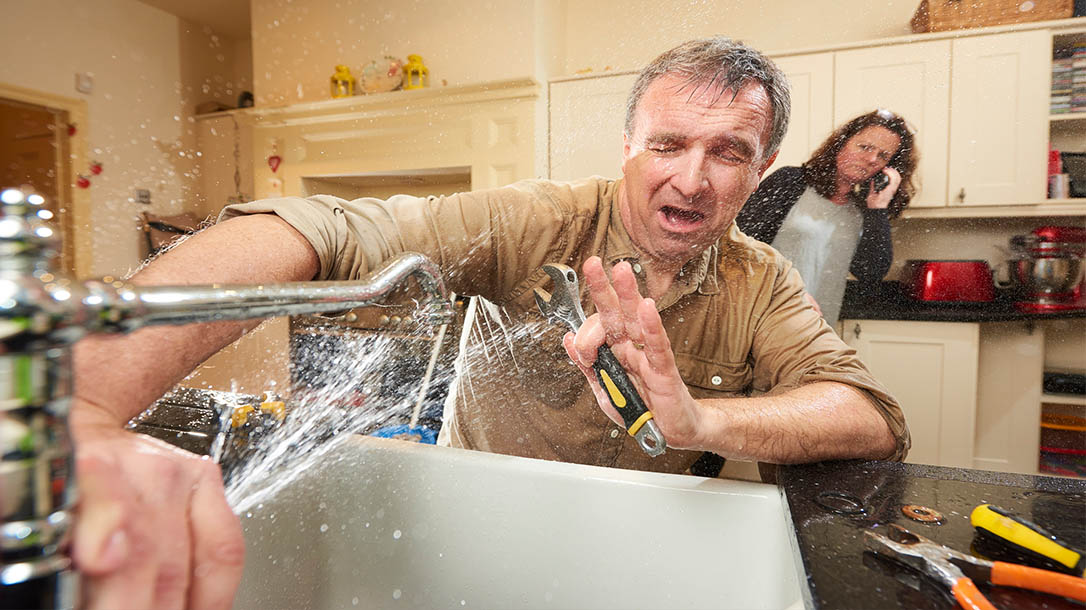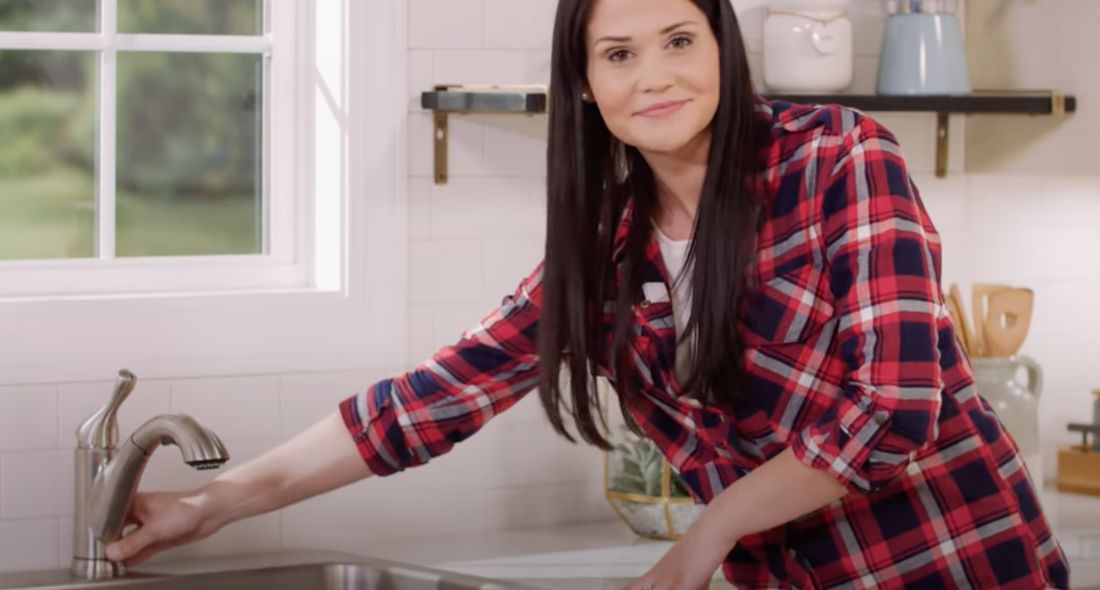When It's Crucial to Repair a Dripping Faucet
When It's Crucial to Repair a Dripping Faucet
Blog Article
Just how do you really feel when it comes to Leaky Faucets: Why They Happen & What to Do About Them?

Trickling taps may look like a minor aggravation, yet their effect goes beyond just the annoyance of the noise. From drainage to sustaining unnecessary financial costs and health and wellness threats, overlooking a dripping faucet can lead to various consequences. In this short article, we'll explore why it's important to resolve this typical home issue quickly and effectively.
Wastage of Water
Ecological Impact
Dripping taps add substantially to water wastefulness. According to the Epa (EPA), a single tap trickling at one drip per second can waste greater than 3,000 gallons of water per year. This not just stress water resources however also affects ecosystems and wild animals depending on them.
Step-by-Step Overview to Taking Care Of a Dripping Faucet
Tools Needed
Prior to trying to fix a dripping faucet, collect the essential tools, including a flexible wrench, screwdrivers, substitute parts (such as washers or cartridges), and plumber's tape.
Common Tap Issues and Their Solutions
Determine the type of tap and the certain issue causing the drip. Usual issues consist of worn-out washing machines, rusty valve seats, or damaged O-rings. Refer to supplier directions or on-line tutorials for step-by-step advice on repair services.
Financial Prices
Increased Water Expenses
Past the environmental effect, trickling faucets can pump up water expenses substantially. The built up wastefulness with time translates into higher utility expenses, which might have been prevented with prompt fixings.
Possible Home Damages
Additionally, long term leaking can cause harm to fixtures and surfaces surrounding the faucet. Water build-up can cause staining, corrosion, and also architectural problems if left unattended, leading to added repair expenses.
Wellness Issues
Mold And Mildew and Mold Development
The constant existence of moisture from a leaking tap develops a perfect atmosphere for mold and mildew and mold development. These fungi not only jeopardize indoor air high quality however additionally posture health and wellness dangers, especially for individuals with breathing conditions or allergies.
Waterborne Illness
Stagnant water in dripping faucets can become a breeding ground for microorganisms and various other virus, boosting the danger of waterborne illness. Impurities such as Legionella microorganisms thrive in stationary water, possibly bring about severe diseases when consumed or inhaled.
Do it yourself vs. Specialist Repair
Pros and Cons of Do It Yourself Fixing
While some might attempt to fix a trickling faucet themselves, do it yourself repair work feature their own collection of challenges. Without appropriate expertise and tools, do it yourself efforts can intensify the problem or bring about incomplete repair services, lengthening the problem.
Benefits of Employing a Specialist Plumber
Hiring a professional plumber guarantees that the underlying root cause of the trickling tap is addressed effectively. Plumbing technicians possess the know-how and equipment to diagnose and fix tap concerns successfully, conserving time and lessening the danger of further damage.
Ecological Duty
Specific Payment to Preservation
Taking obligation for repairing leaking taps lines up with broader efforts towards water preservation and environmental sustainability. Every person's activities collectively make a significant influence on protecting precious sources.
Sustainable Living Practices
By prioritizing punctual repair work and taking on water-saving routines, people contribute to lasting living practices that profit both present and future generations.
Safety nets
Regular Upkeep Tips
To prevent trickling faucets, do regular maintenance such as cleansing aerators, inspecting for leaks, and changing worn-out parts promptly. Furthermore, take into consideration installing water-saving gadgets or updating to more effective fixtures.
Relevance of Prompt Repairs
Resolving dripping faucets as soon as they're observed stops more water wastefulness and possible damages, ultimately saving both water and money in the long run.
Impact on Building Worth
Assumption of Well-Maintained Residential Property
Keeping a building in good condition, consisting of addressing maintenance issues like leaking taps, boosts its viewed worth and desirability amongst prospective buyers or occupants.
Influence on Resale Value
Residences with properly maintained plumbing fixtures, consisting of faucets, command higher resale worths in the property market. Addressing leaking taps can contribute to a positive perception throughout home examinations and negotiations.
Final thought
Attending to a leaking tap surpasses plain ease; it's an important step toward saving water, minimizing monetary expenses, and securing health and wellness and residential property. Whether with DIY repair work or professional assistance, doing something about it to deal with leaking taps is a little yet impactful method to advertise accountable stewardship of sources and add to a much healthier, a lot more lasting future.
How to Fix a Leaky Faucet: Step-by-Step Repair Guide
A leaky faucet may seem like a simple annoyance, but if it's not fixed promptly, that leak could cost hundreds to potentially thousands. From water damage to mold, mildew, and high water bills, even a tiny leak can be catastrophic if left unattended. Damage like this can even affect the overall value of your home, so it's important to take the right approach for leaky faucet repair. You may need the help of a plumber in some cases, but we've got a few tips you can try on how to fix a leaky faucet before calling the pros.
Four Faucet Types
When you're learning how to fix a leaky faucet, the first step is knowing what kind of faucet you're working with! There are four common types.
Cartridge Faucets
Cartridge faucets come in one- or two-handled varieties. In one-handled cartridge faucets, hot and cold water combines in a single cartridge. In the two-handled versions, hot and cold water are controlled separately and mixed in the faucet.
Ball Faucets
Ball faucets have a single lever you push up and down to adjust the pressure and rotate to change the temperature. A slotted metal ball controls the amount of water allowed into the spout.
Compression Washer Faucets
They're the oldest type of faucet, but they're still used in many homes — especially older ones. Compression faucets have two separate handles that, when turned, raise or lower the washer that seals a water valve. This valve stops water from flowing through the faucet when it is turned off.
Disc Faucets
Disc faucets rarely need to be repaired due to their maintenance-free design. The water flow is controlled by two discs — the upper one raises and lowers against a fixed lower disc, creating a watertight seal. If your disc faucet starts leaking, you may need to replace the seals or clean residue buildup from the inlets.
Fixing a Leaky Faucet
Step 1: Turn Off the Water
Whether you're learning how to fix a leaky bathtub faucet or how to fix a leaky kitchen faucet, always turn off the water supply to your working area when you're fixing a leak. The last thing you want is a flood added to your list of things to fix.
Look for the shutoff valves below your sink or around the tub and turn them clockwise to stop the water flow. If your faucet doesn't have shutoff valves, you may need to turn off the water for the whole house. Check to make sure it's off by turning the faucet on. If nothing comes out, you're ready to start the repair.
Step 2: Take Apart the Faucet
How you disassemble your faucet depends on the type of fixture you have. You can use a flathead screwdriver to remove the caps on top of the handle or handles for cartridge and compression faucets. Inside, you should see handle screws. Unscrew these with a screwdriver to remove the handle.
Disc- and ball-style faucets will typically have an inlet screw near the handle, and removing that will reveal the interior of the faucet.
Detach the Valve Stem
For cartridge- and compression-style faucets, you'll see the inner valve stem or cartridge once you remove the faucet handles. If you have a compression faucet, unscrew the brass valve stem. If you have a cartridge faucet, pull out the cartridge. If your cartridge has been in place for a while, it may require some tools or extra force to remove it due to mineral deposits.
Examine and Replace Parts
Once you've removed the parts, check them out to confirm what needs to be replaced. You may see corroded rubber washers, O-rings, stems, or cartridges. On a ball-style faucet, check the seats and springs for damage.
If you need to repair a leaky disc faucet, check the inlet and seals on the lower disc.
Once you determine what parts must be replaced, visit your local hardware store. Bring the damaged parts with you to ensure you can purchase the correct components to replace them.
Clean Valves and Faucet Cavity
If you've removed a stem or cartridge, you may notice mineral buildup in the faucet's threads. Use white vinegar to clean the valve seat by soaking it for a few minutes, then scrub it away with a soft toothbrush and rinse with warm water. You can also clean the interior of the faucet in the same way.
Reassemble the Faucet
Once your faucet is cleaned and the required parts have been replaced, it's time to reassemble it. Put the pieces back together and slowly turn the water supply back on. Doing this slowly is crucial because too much initial water pressure can damage the new hardware you've just installed.
https://homewarranty.firstam.com/blog/how-to-fix-leaky-faucet

Do you really like reading up on Leaky Faucets: Why They Happen & What to Do About Them? Give a comment directly below. We would be delighted to hear your feelings about this write-up. In hopes to see you back again in the near future. You should take a moment to share this blog if you appreciated it. Thanks a lot for your time. Return soon.
Report this page